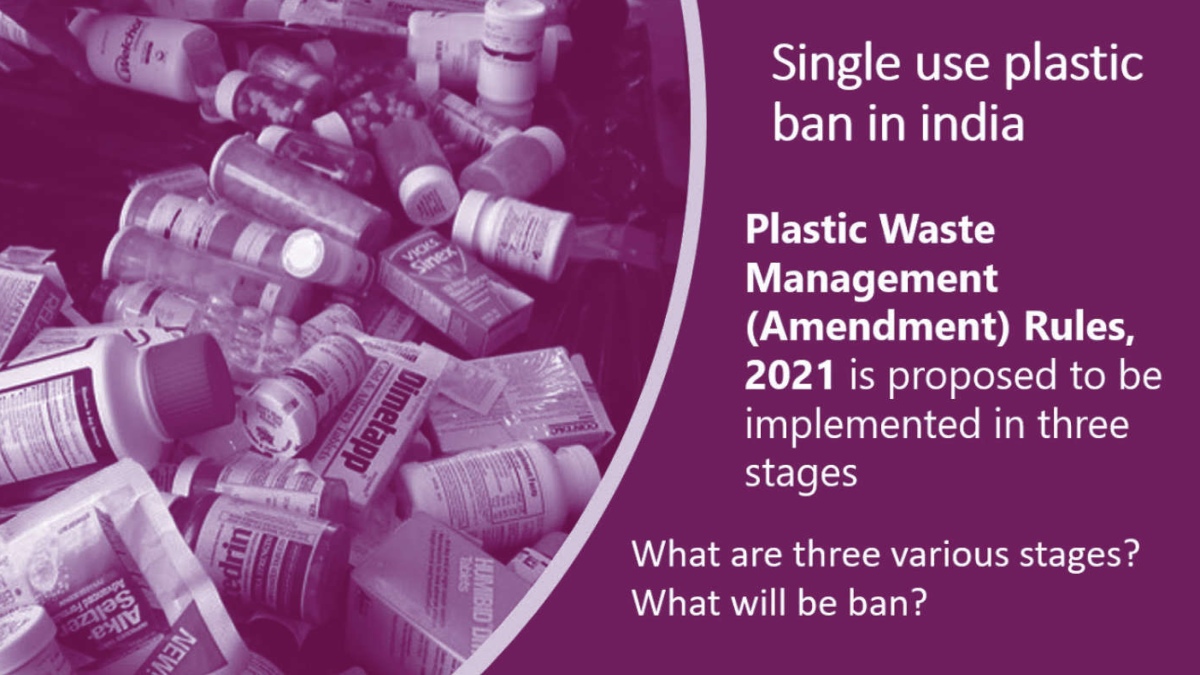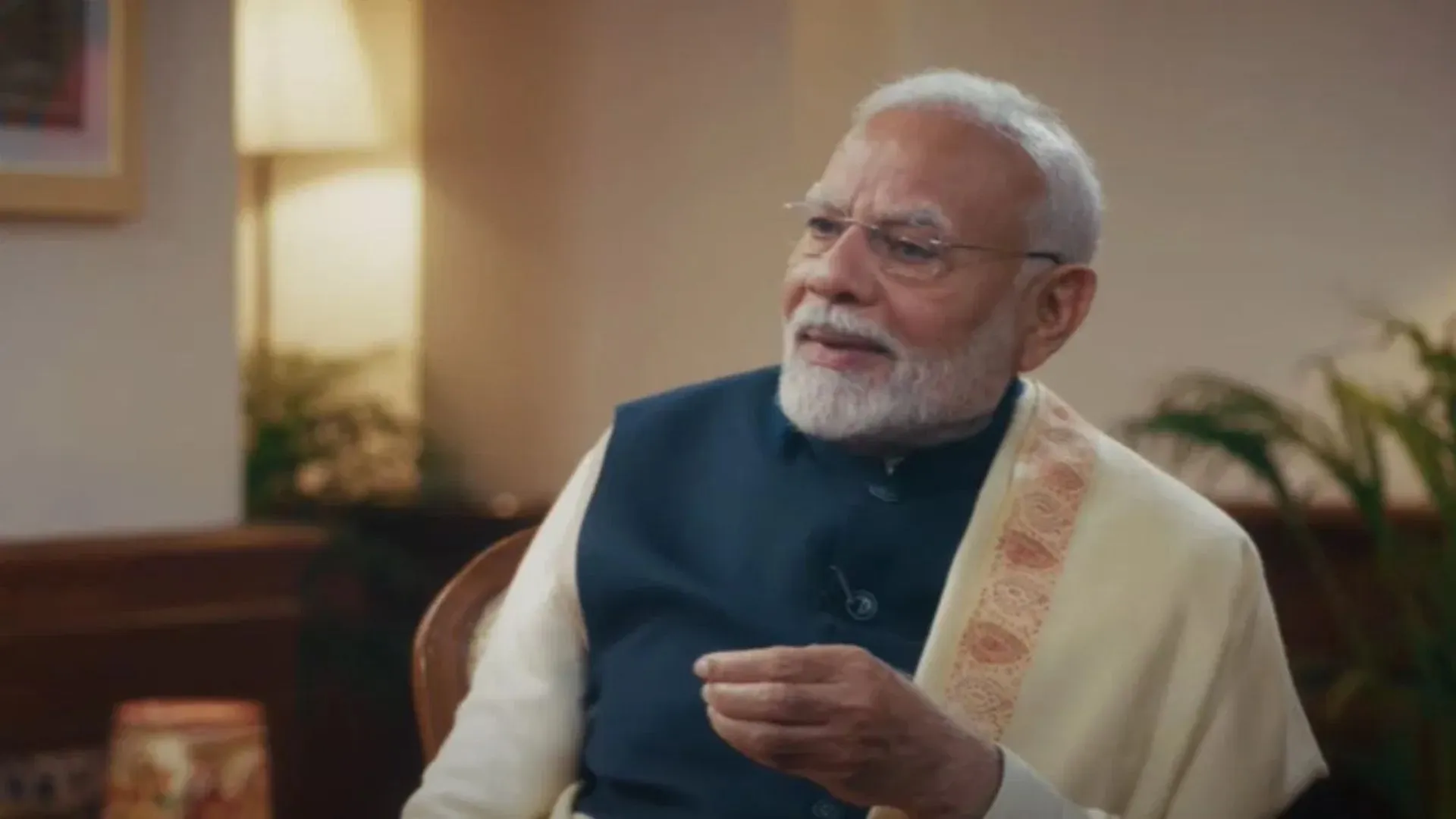In pursuance of its goal of becoming single-use plastics (SUPs) free by 2022, the government of India on 12th August notified the Plastic Waste Management (Amendment) Rules, 2021. This is the second amendment to the rules in five years and has brought some major changes in the government’s policy. Until now, the Centre only encouraged the States to act while taking the backseat believing that a blanket ban was no solution to the problem of single-use plastics. But since the State laws proved to be largely fruitless, the Central government now plans to prohibit the use of 20 identified SUPs in three stages through a national ban.
In the first stage, plastic carry bags of less than 75 microns (up from 50 microns) in thickness, or 60 GSM in the case of non-woven plastic bags, will be phased out by September 30, 2021. Things like plastic earbuds, flags, plates, cups, glasses, knives, forks, wrapping films around sweet boxes, cigarette packets, PVC banners, thermocol for decoration will be banned in the second stage from July 1, 2022. Lastly, the third stage will see the prohibition of plastic carry bags of 120 microns in thickness from December 31, 2022. All the items mentioned in the amendment, barring a few, are manufactured by small and medium enterprises.
Firstly, how these items have been selected by the government is a mystery. We do know that these items were identified on a ‘utility vs environmental impact’ scale based on a report by an expert committee set up under the directions of the Ministry of Chemicals and Fertilizers. Items that scored low on utility but high on environmental impact were to be banned. But it seems like the government had big corporations in mind while reading the report. Various items that fell into that category such as cigarette butts, plastic bottles, and multi-layered packaging have not been banned. And these are not getting banned anytime soon thanks to clause 4(b) of the amendment.
As per the clause, any further prohibition on manufacturing, import, stocking, distribution, sale and use of SUPs, will only come into force after 10 years from the date of publication of this amendment. This essentially converts into a 10-year holiday period for these corporations. The government instead of encouraging the industries to invest in research and development of new packaging material, is ensuring that no other strike will be made on them. And thus, promoting them to keep producing such polluting material with no fear for at least the coming decade.
Secondly, the amendment says that now name and registration number have to be printed on single-use carry bags and plastic packaging by the producer and brand owner as well along with the manufacturer. Printing on multi-layered packaging, however, has been excepted for imported goods. Apart from these minor changes in printing, the amendment is silent on how the government plans on managing plastic packaging. It is concerning because according to a report published by the Centre for Science and Environment, plastic packaging contributes to 60% of the total plastic waste. Most of the plastic packaging is disposed of in just a few hours or days of use leading to a burgeoning menace.
The government’s only solution to manage these plastic wastes is through the extended producer responsibility (EPR) of the producer, importer and brand owner (PIBO). However, this process may encourage companies to market their EPR as a part of corporate social responsibility (CSR), and present it as a voluntary and gratuitous service to the nation, thereby reducing the reach of recycling activities. Moreover, the government has already tried and tested this method through the waste collection system in the original rules of 2016. But, even after more than five years have passed, the government is refusing to accept that it has failed. The main reason behind such misadventure was non-compliance by PIBOs and hazy implementation and enforcement by the concerned authorities. The system already lacked clarity in procedure and expecting the private players to act while being docile itself was bound to result in failure.
This lack of clarity and research plagues the government’s other decisions as well in its plastic waste policy. This is the third issue. Increasing the thickness of plastic carry bags is not a new change. Even in the 2016 rules itself, it had been increased from 40 to 50 microns. The reason cited by the government was that thicker plastic bags and plastic packaging will result in an increase in price and it will eventually reduce the quantity of such plastic in the market. Seeing that its expectation did not match reality, the government has come up with another justification. It now believes that increasing the thickness of plastic bags will result in more and more plastic being recycled. Only time will tell if the government is right this time, or will this just be another fruitless speculation.
Lastly, the amendment excepts the 20 identified items, along with carry bags, from being banned if they are made from compostable plastics. This has left a loophole that can be exploited. We do not have the systems in place to ensure that the plastic being sold as compostable is actually compostable. This can result in the normal single-use plastic making it into the market as compostable plastic. This problem is exacerbated by the lack of awareness among the genreal public about this type of plastic. There is a common myth that it will simply evaporate or break down into eco-friendly components. Thus, people end up mixing it with other kinds of plastic which makes this recyclable material unfit for recycling. While it is true that compostable plastic is degradable but it is only possible in industrial composting units which India has a dearth of.
The government’s biggest challenge has been a lack of strategic approach further crippled by an absence of an alternative to SUPs. A number of laws both at the state and the central level were formulated, yielding no results. Instead of forcing the market to phase out single-use plastic within months, perhaps it would be better to find an alternate solution first and then formulate a policy focusing on the culprits that are actually contributing to plastic waste.























